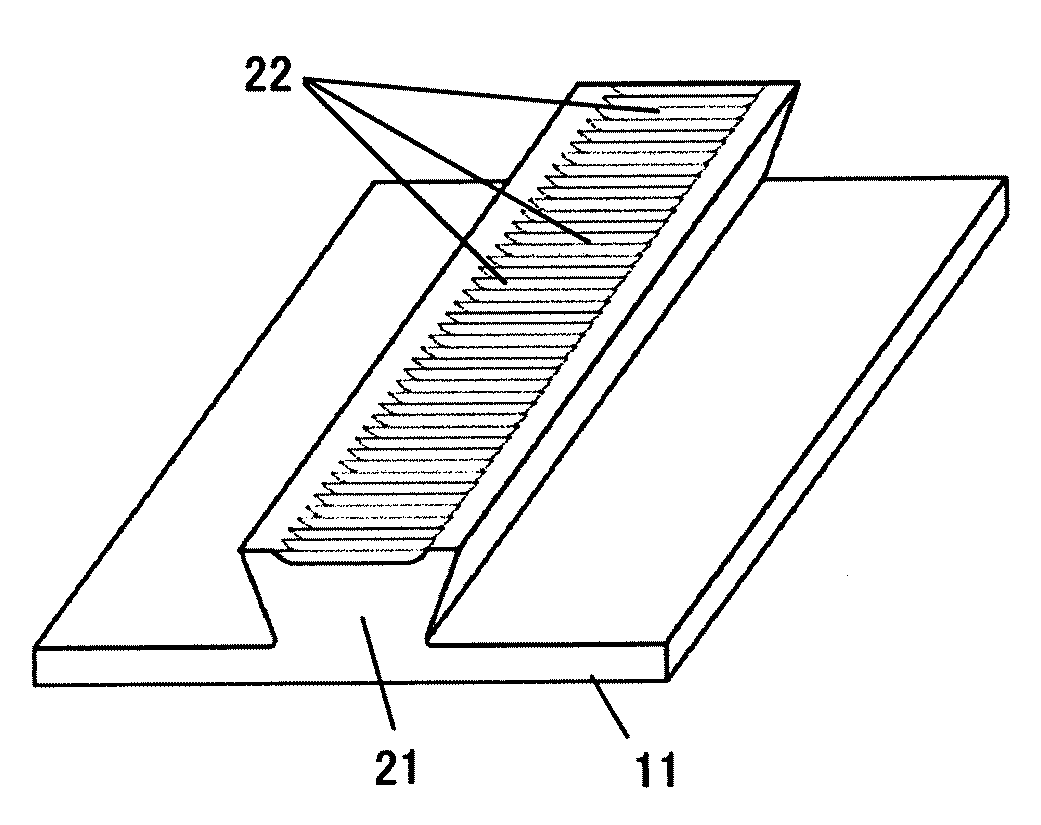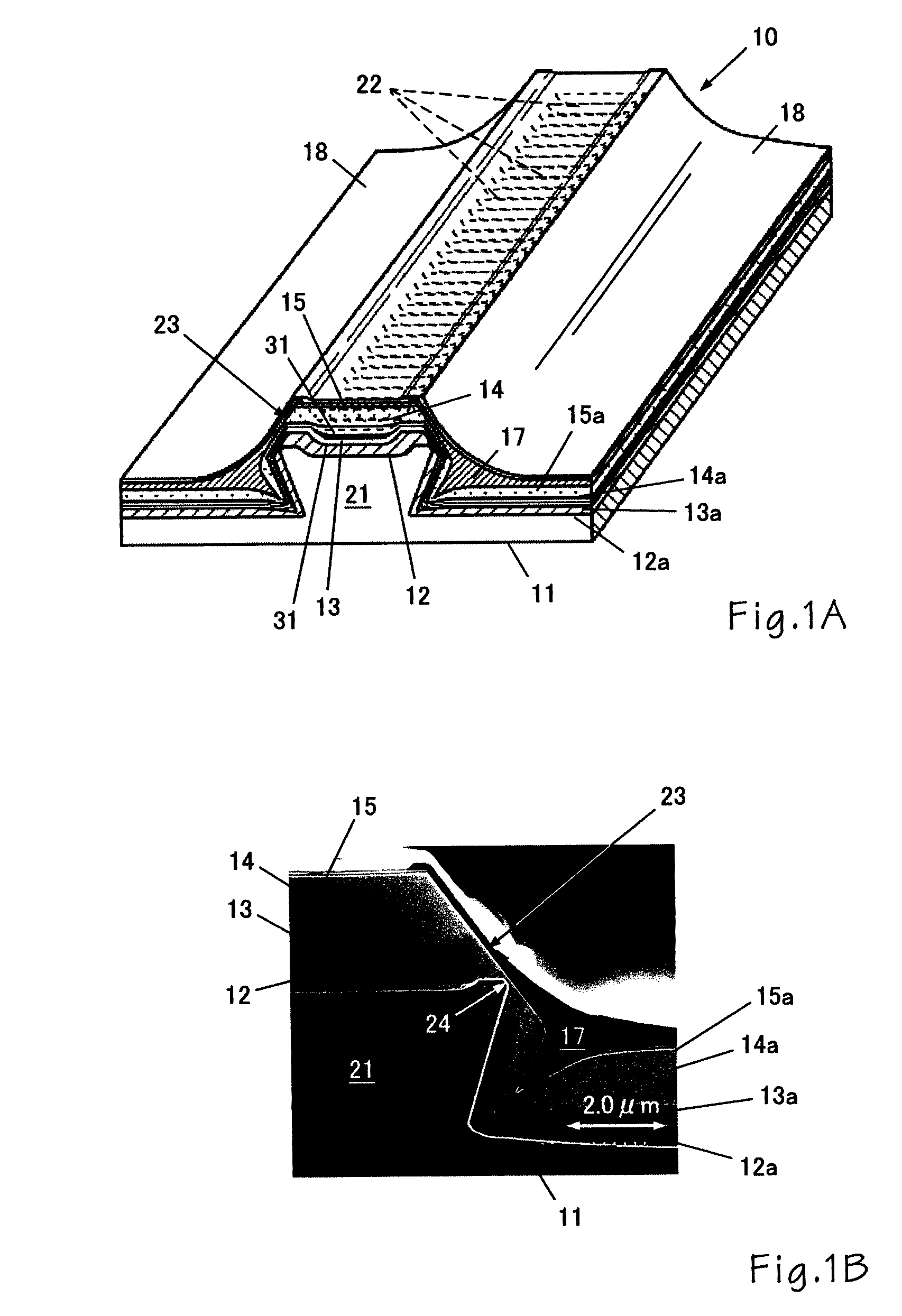Quantum nanostructure semiconductor laser
a semiconductor laser and quantum nanotechnology, applied in the field of quantum nanostructure semiconductor lasers, can solve the problems of preventing industrialization from spreading, limiting the technique, and reducing the efficiency of manufacturing processes, so as to achieve low parasitic capacitance, improve the effect of manufacturing process and improve the efficiency of manufacturing
- Summary
- Abstract
- Description
- Claims
- Application Information
AI Technical Summary
Benefits of technology
Problems solved by technology
Method used
Image
Examples
Embodiment Construction
[0052]FIG. 1A shows the structure of a quantum nanostructure semiconductor laser that is a first preferred embodiment of the present invention, and FIG. 1B is a scanning electron micrograph showing an enlarged view of the principal portions. A compound semiconductor substrate 11 provides the overall physical and mechanical support for the device. A ridge 21 is formed on the substrate 11. The ridge 21 is formed as a stripe extending along the direction of laser beam emission, and preferably has a reverse mesa shape. A plurality of parallel V-grooves 22 is formed on the surface of the ridge 21, with each of the V-grooves 22 extending orthogonally to the lengthwise direction of the ridge 21.
[0053]A technique that is already known, such as from Reference 4, is used to epitaxially grow at least a lower cladding layer 12 on the ridge 21, which is followed by the forming of finite length quantum wires 13 at a position corresponding to the position of the V-grooves 22, an upper cladding lay...
PUM
 Login to View More
Login to View More Abstract
Description
Claims
Application Information
 Login to View More
Login to View More - R&D
- Intellectual Property
- Life Sciences
- Materials
- Tech Scout
- Unparalleled Data Quality
- Higher Quality Content
- 60% Fewer Hallucinations
Browse by: Latest US Patents, China's latest patents, Technical Efficacy Thesaurus, Application Domain, Technology Topic, Popular Technical Reports.
© 2025 PatSnap. All rights reserved.Legal|Privacy policy|Modern Slavery Act Transparency Statement|Sitemap|About US| Contact US: help@patsnap.com



